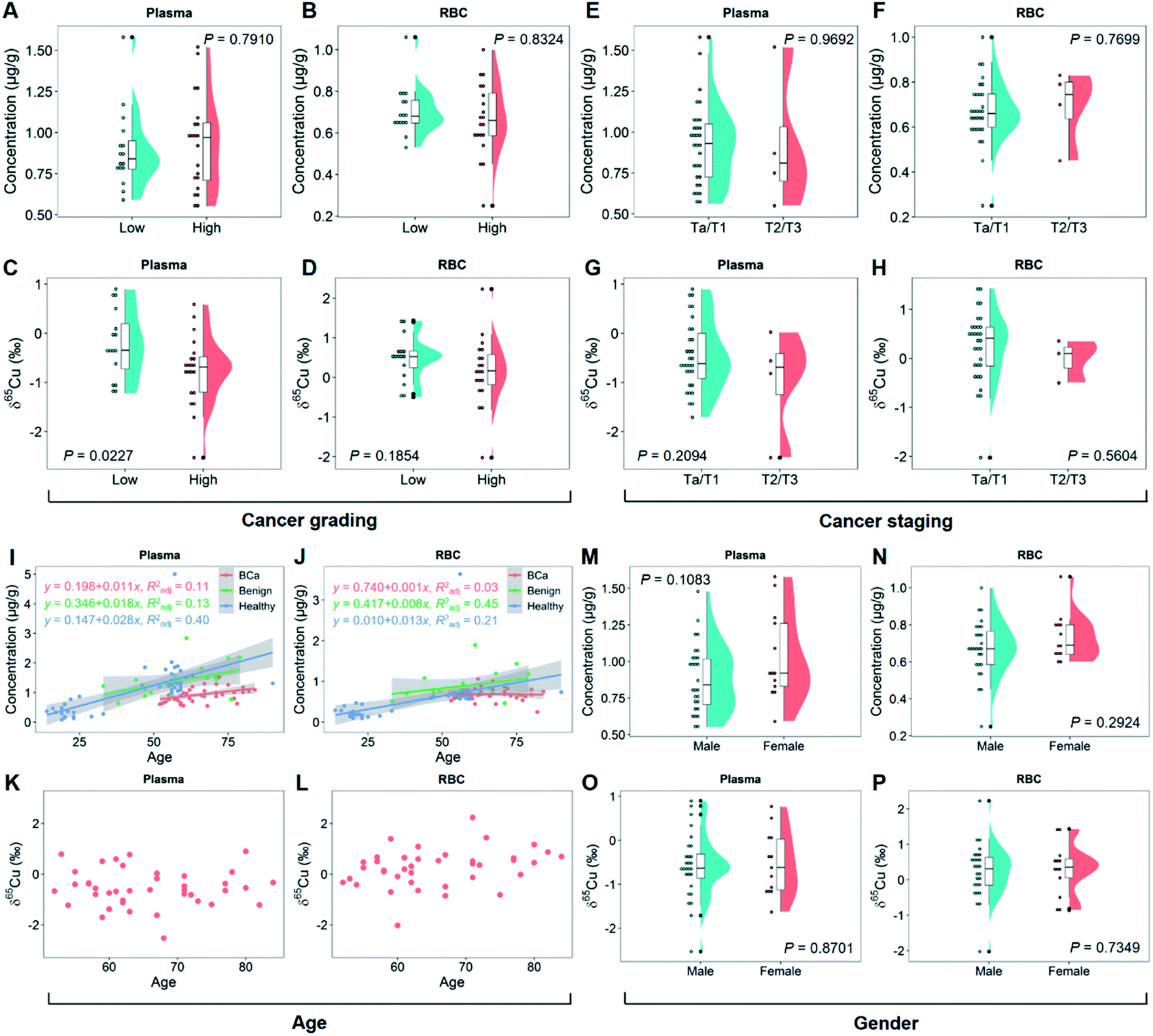Identification of two-dimensional copper signatures in human blood for bladder cancer with machine learning
Abstract
Currently, almost all available cancer biomarkers are based on concentrations of compounds, often suffering from low sensitivity, poor specificity, and false positive or negative results. The stable isotopic composition of elements provides a different dimension from the concentration and has been widely used as a tracer in geochemistry. In health research, stable isotopic analysis has also shown potential as a new diagnostic/prognostic tool, which is still in the nascent stage. Here we discovered that bladder cancer (BCa) could induce a significant variation in the ratio of natural copper isotopes (65Cu/63Cu) in the blood of patients relative to benign and healthy controls. Such inherent copper isotopic signatures permitted new insights into molecular mechanisms of copper imbalance underlying the carcinogenic process. More importantly, to enhance the diagnostic capability, a machine learning model was developed to classify BCa and non-BCa subjects based on two-dimensional copper signatures (copper isotopic composition and concentration in plasma and red blood cells) with a high sensitivity, high true negative rate, and low false positive rate. Our results demonstrated the promise of blood copper signatures combined with machine learning as a versatile tool for cancer research and potential clinical application.

Figure 1. Cu concentration and the δ65Cu value in plasma and RBC of BCa patients grouped by cancer grade, cancer stage, age, and gender. Each symbol presents an individual subject. (A and B) Cu concentration in plasma and RBC of BCa patients for different grades. “Low” refers to low-grade BCa (n = 16) and “high” refers to high-grade BCa (n = 21). PA = 0.7910 and PB = 0.8324, Mann Whitney test. (C and D) δ65Cu value in plasma and RBC of BCa patients for different grades. PC = 0.0227 and PD = 0.1854, unpaired Student’s two-tailed t-test. (E and F) Cu concentration in plasma and RBC of BCa patients for different cancer stages (n = 31 for Ta/T1 and n = 4 for T2/T3). PE = 0.9692 and PF = 0.7699, unpaired Student’s two-tailed t-test. (G and H) δ65Cu value in plasma and RBC of BCa patients for different cancer stages. PG = 0.2094 and PH = 0.5604, unpaired Student’s two-tailed t-test. (I and J) Variation of the Cu concentration in plasma and RBC of all subjects with age. (K and L) Variation of the δ65Cu value in plasma and RBC of BCa patients with age. (M and N) Variation of the Cu concentration in plasma and RBC of BCa patients with gender (n = 28 for male and n = 13 for female). PM = 0.1083, unpaired Student’s two-tailed t-test; PN = 0.2924, Mann Whitney test. (O and P) Variation of the δ65Cu value in plasma and RBC of BCa patients with gender. PO = 0.8701 and PP = 0.7349, unpaired Student’s two-tailed t-test.